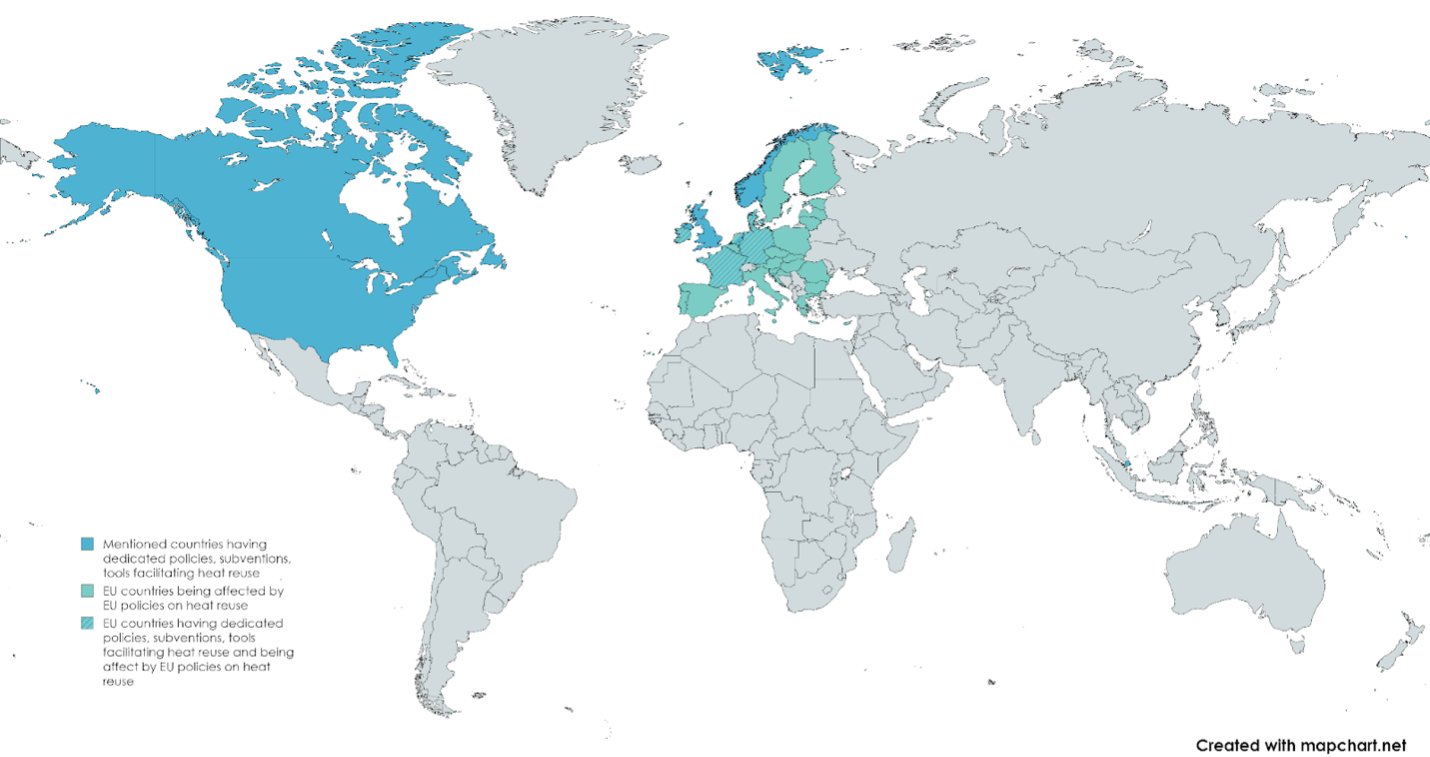To celebrate the 54th Earth Day, David Gardiner and Associates (DGA) is highlighting a new Open Compute Project paper regarding policies to accelerate data center heat reuse. To learn more about the opportunity for data centers to reuse heat — and the policies different countries have implemented to enable it — read the Open Compute Project’s full white paper, of which David Gardiner is the lead author, here.
As DGA has previously written, data centers have an opportunity to curb emissions by reusing their heat in sectors such as pharmaceuticals, buildings, and food and beverage processing. This is a win-win solution as data centers can lower their cooling needs — which account for 40% of all data center electricity use — and their costs, while supplying clean heat to nearby factories and buildings eager to lower their own emissions and operational costs with this new heat supply.
Data center heat reuse has been possible for decades, but there are numerous barriers to its widespread deployment. For one, there is a general lack of awareness about this opportunity; both data center operators and potential off-takers are largely unaware of the methods used to recapture, transfer, and use the excess heat. It can also be costly to transfer heat over long distances. Locating data centers and off takers proximate to one another could help address this challenge — if data centers and end users are able to find each other.

Figure 1: Map of countries with policies promoting data center heat reuse that are highlighted in the paper (not comprehensive).
The OCP paper identifies specific policies governments have adopted to mitigate these challenges. The highlighted solutions promote collaboration, offer incentives, or even require, data centers heat reuse. Policies of this nature are increasingly common in Europe, but less so elsewhere in the world despite rapid growth in new data centers.
To promote collaboration between sectors, the European Union established the Heat and Cold Matching Platform, a tool that helps match generators of excess heat with potential end users. At the country-level, Germany, Ireland, and Norway have implemented similar policies.
Some countries have policies that go so far as requiring data center heat reuse. Germany’s Energy Efficiency Act, for example, mandates that data centers beginning operation in July 2026 or later must find ways to reuse at least 10% of their heat; that figure jumps to 20% by July 2028.
Certain U.S. states have also made strides to encourage data center heat reuse. In Washington state, the Industrial Symbiosis Program offers grants for the research and development of industrial waste coordination projects, including data center heat reuse.
These are just a snapshot of the ways governments can accelerate data center heat reuse. Not only does heat reuse have major environmental benefits, it’s also an economic opportunity for countries and cities. Stockholm successfully launched an initiative to attract data centers to the city, simultaneously boosting its IT industry and lowering carbon emissions by using data centers’ heat in its district heating system.
The OCP paper calls on others in the data center industry, potential end users of data center heat, and national and sub-national policymakers to actively collaborate with each other to adopt policies that connect different sectors and make data center heat reuse economically viable. As governments continue to move to decarbonize their economies, leaders should include data center heat reuse policies as a key tool to reach a net-zero future.
On April 25, David Gardiner will present the report at the OCP Regional Summit in Lisbon. The paper’s other authors include Otto Van Geet from the National Renewable Energy Laboratory (co-lead), Jaime Comella from AQ Compute, and Bharath Ramakrishnan from Microsoft.
